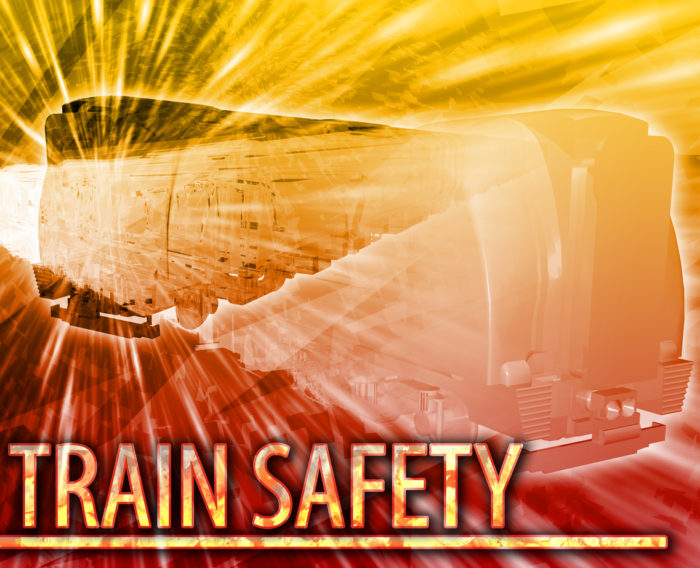Another Preventable Train Derailment
Penny-Pinching on Positive Train Control
Amtrak trains have been involved in four deaths since December 2017, including the most recent tragedy in South Carolina that killed two crew members and injured more than 100 passengers.
The engineer of the Miami-bound train, 54-year-old Michael Kempf, of Georgia, died after crashing into a CSX train sitting empty on the tracks. The accident occurred in Cayce, a city in Lexington and Richland counties about 10 miles south of Columbia. Michael Cella, the 36-year-old conductor, who lived in Florida, also died.
Kempf said he knew he probably would perish on the job because of concerns not only about the Feb. 5, 2018, accident but also about the one Jan. 31, 2018, when an Amtrak train that was chartering dozens of members of Congress and their families to a Republican retreat in West Virginia hit a garbage truck.
“Me and him always talked about this…something happening,” Rich Kempf told the Daily News in an article titled “Engineer slain in Amtrak crash was ‘voicing concerns about getting killed.’”
Michael Kempf worked in the industry for more than 10 years for both CSX and Amtrak after serving in the Army, Rich Kempf said.
“They paid good money and you got good benefits,” he told the Daily News.
House Speaker Paul Ryan was among those aboard the charter. While no major injuries were reported, the accident killed the occupant of the truck that apparently was stalled on the tracks as the train approached. The occupant has been identified as 28-year-old Christopher Foley, of Virginia. The National Transportation Safety Board is investigating, as it also investigates a train derailment near Tacoma, Wash., on Dec. 18, 2017. In that accident, the train was hurtling along the tracks at close to 80 miles per hour in a 30-mile-per-hour zone on a section of curve. Three lost their lives.
“The circumstances are eerily similar to a 2015 Amtrak crash near Philadelphia in which eight people were killed when a train derailed as it sped through a sharp curve,” reads an editorial in The New York Times titled “The Amtrak Derailment Was Caused by a Collective Failure.” “In both cases, the trains were operating without the benefit of a system known as positive train control, which can automatically slow down or stop a train when human operators fail to do so. This technology is not some hot new thing. The National Transportation Safety Board has been recommending it for nearly half a century. For various reasons – including bureaucratic inertia and penny-pinching – many railroads still don’t have functioning systems in place.”
The editorial continues, “In 2008, after a rail accident in California killed 25 people, Congress required all railroads to install positive train control by the end of 2015. But after many railroads complained that they were not close to completing the task, lawmakers in late 2015 gave them another three years to comply. They also allowed the Department of Transportation to grant extensions of an additional two years on a case-by-case basis if railroads achieved certain milestones.”
All at the expense of passengers. Sadly and senselessly, the South Carolina accident is being blamed on the absence of positive train control, which could have prevented the derailment.
“PTC uses communication-based / processor-based train control technology that provides a system capable of reliably and functionally preventing train-to-train collisions, overspeed derailments, incursions into established work zone limits, and the movement of a train through a main line switch in the wrong position,” the DOT’s Federal Railroad Administration states on its Web site.
The Washington Post reported in an article titled “NTSB: Amtrak engineer sounded horn, applied emergency brake in S.C. crash” that Association of American Railroads Senior Vice President Michael Rush said the group’s members are “very far along” in installing PTC and the seven major U.S. railroads “are going to make it” by December 2018. However, The Post points out that the definition of “make it” requires that hardware be installed and employees trained but only half of each railroad’s PTC system to be activated by the end of the year, with the rest completed by 2020.
“Installing PTC is an expensive challenge for the railroads, requiring that hardware be added in 25,000 locomotives and sensors be placed along the railway beds,” The Post reported. “The payoff, safety advocates say, is that it will help prevent collisions and derailments.”
Positive train control has been an area of concern at Searcy Denney Scarola Barnhart & Shipley since the 2015 accident in Pennsylvania, which also was an Amtrak train and killed eight.
“Chris Searcy and Greg Barnhart have made it a driving force to hold the railway industry’s “feet to the fire” every time they have been given the opportunity to fight for a client against the railroads,” paralegal John Hopkins wrote in a blog titled “Tragic South Carolina Train Wreck – How Preventable Was It?” “Each time it seems as if making decisions that place profits before safety, more often than not, drives the industry in its decisions. We can only speculate how many lives and injured might have been spared had the railroad industry deployed positive train control (PTC) on a schedule that had the soonest safety of passengers in mind.”
Share This



